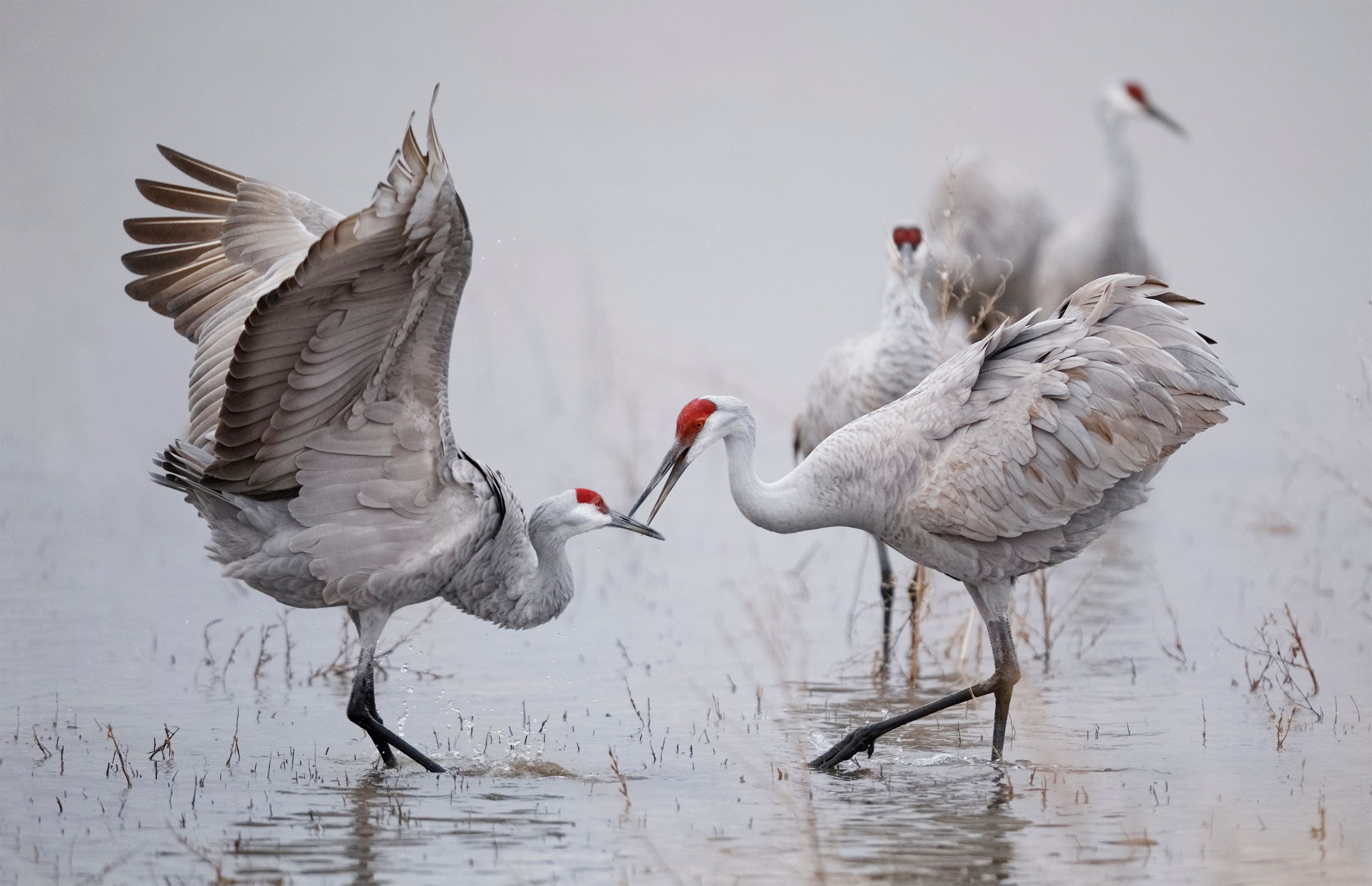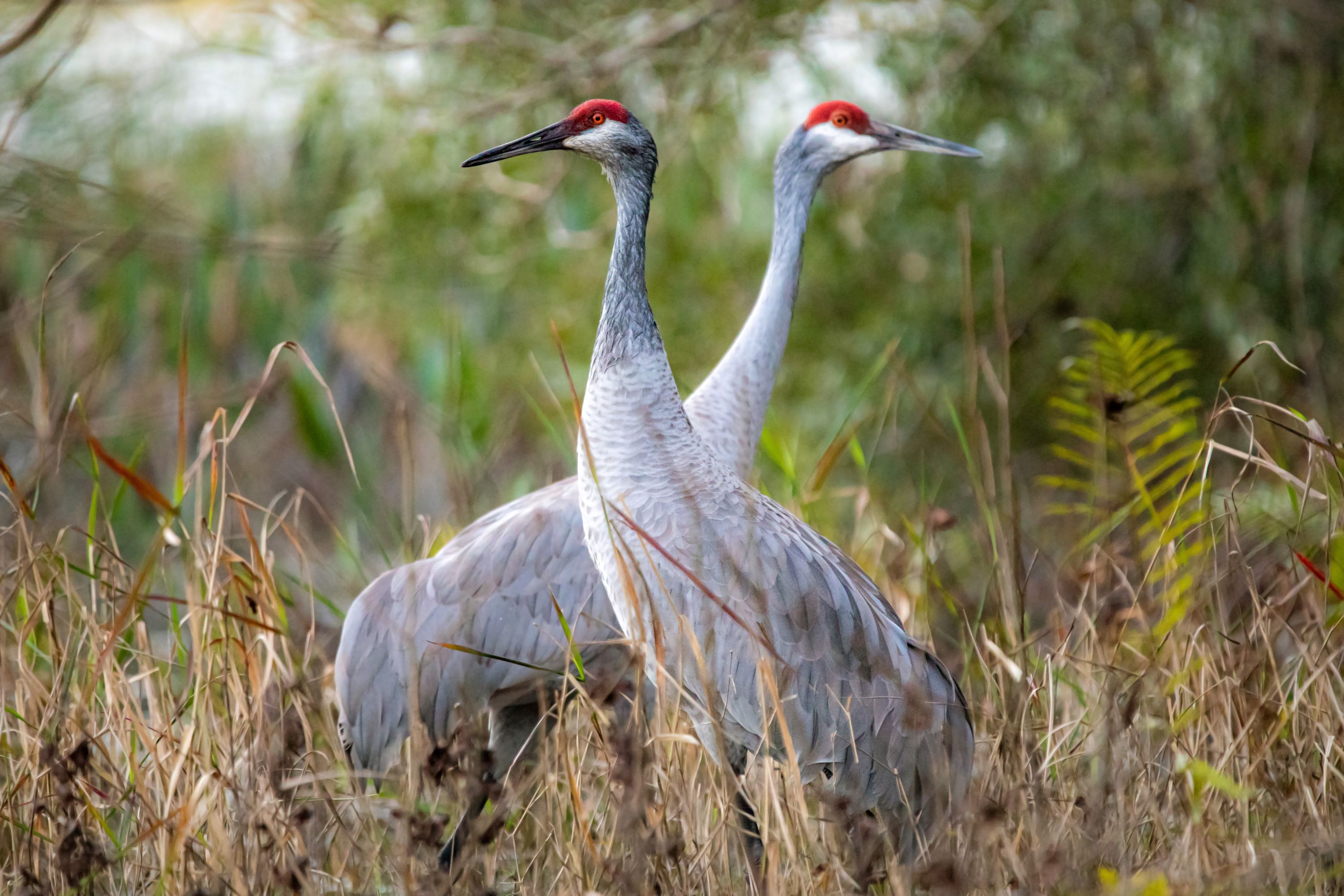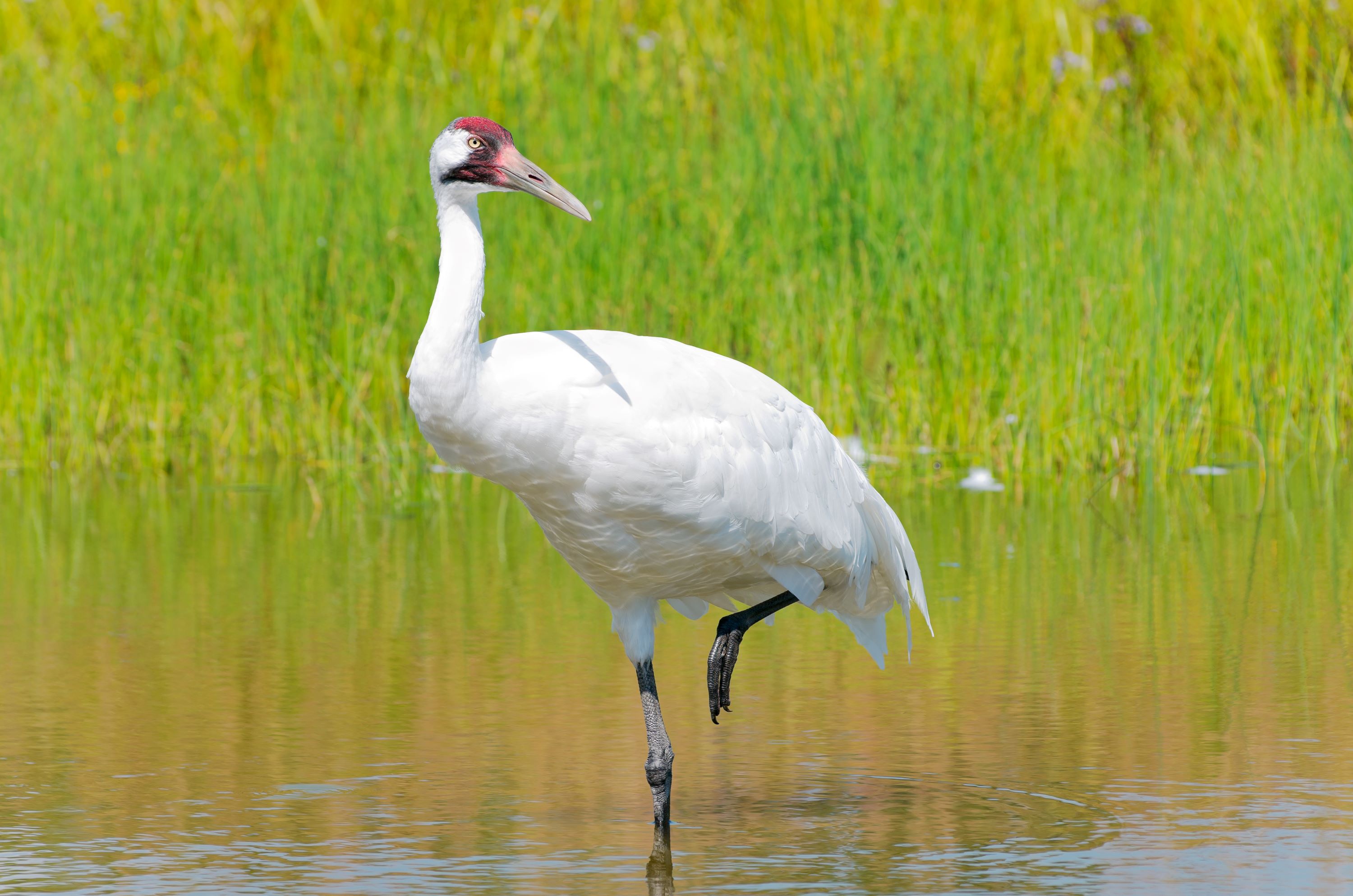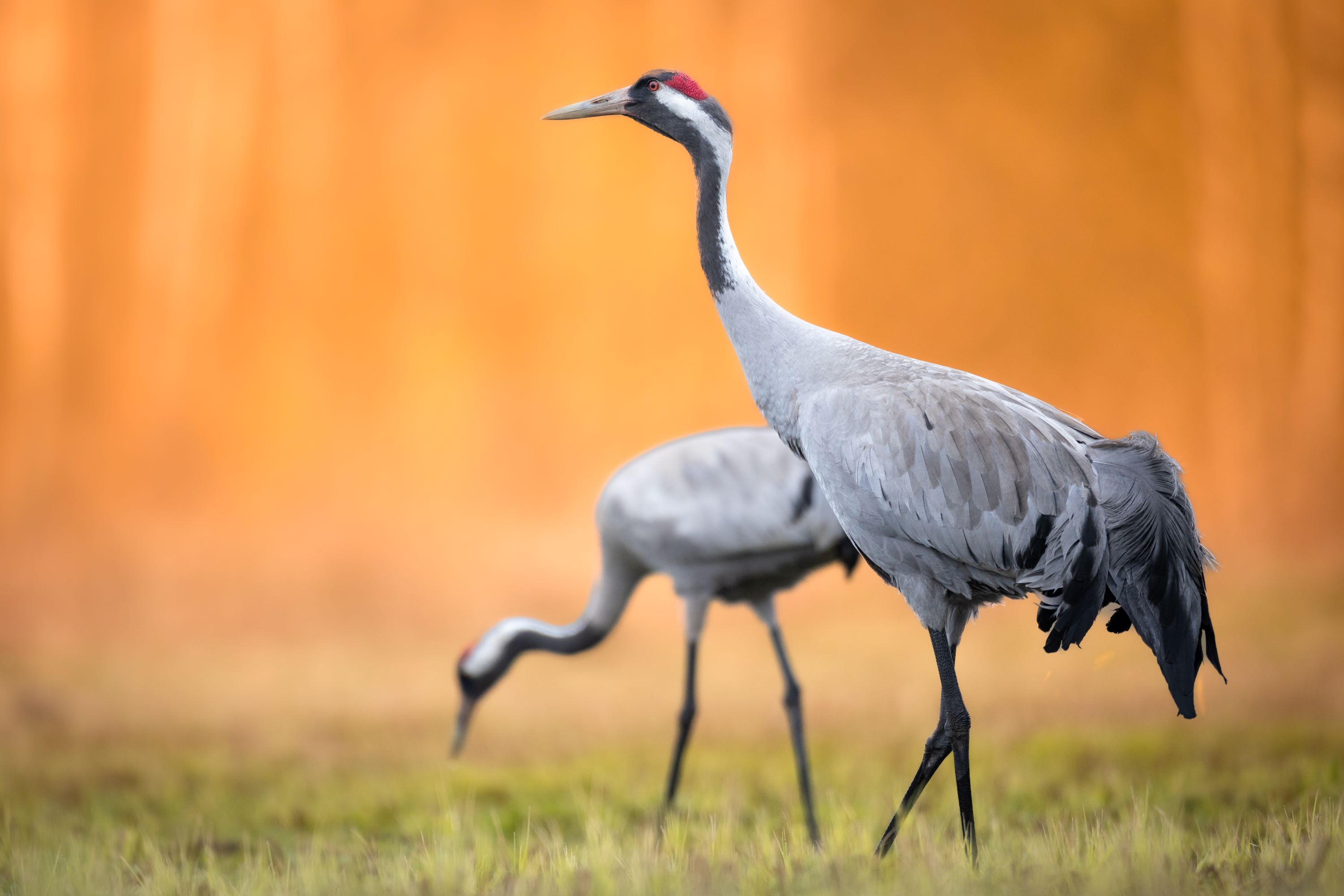
Exploring the World of Cranes in Utah: The Gruidae Family
Cranes, belonging to the family Gruidae, are among the most majestic and iconic birds found across the globe. The Gruidae family, part of the order Gruiformes, encompasses several species of large, long-legged, and long-necked birds that are often associated with wetlands, grasslands, and agricultural fields. These birds are known for their elaborate courtship dances, which involve a complex series of steps, bows, and leaps accompanied by distinctive calls. Cranes are monogamous, often forming pair bonds that last for many years, if not for life. Most species in this family are migratory, undertaking long, arduous journeys between their breeding and wintering grounds. The family Gruidae plays a significant role in the folklore and culture of various societies around the world, symbolizing longevity, fidelity, and peace.
Cranes are characterized by their diverse sizes and plumage colors, ranging from the smaller, more compact Demoiselle Crane to the towering height of the Sarus Crane. They are primarily omnivorous, feeding on a varied diet that includes plant matter, insects, and small animals. The breeding habitat of cranes is closely tied to wetlands, marshes, or open grasslands where they build their nests and raise their young. Conservation efforts for these birds are vital, as habitat loss and human encroachment have led to declines in crane populations globally. Organizations and conservationists are actively involved in habitat restoration, protection laws, and breeding programs to ensure the survival of these magnificent birds.

Sandhill Cranes in Utah
In Utah, Sandhill Cranes are a captivating sight, particularly during their migratory periods. These large birds, known for their grey plumage and red foreheads, travel through Utah in the spring and fall. The best time to observe Sandhill Cranes in Utah is from late February to April during their northward migration, and again from September to October as they journey south. During these times, they can be spotted in various locations across the state, including wetlands and agricultural fields where they stop to rest and feed.
One of the prime locations for viewing Sandhill Cranes in Utah is the Wasatch Front, especially near the Great Salt Lake and its associated wetlands. The Bear River Migratory Bird Refuge and the Farmington Bay Waterfowl Management Area are particularly popular among bird watchers. These areas provide ideal stopover habitats for the cranes, offering ample food and protection. The sight of these birds foraging and interacting in the wild is a memorable experience, enhanced by their haunting and resonant calls.

Whooping Cranes
The Whooping Crane, a member of the Gruidae family, stands as a symbol of conservation success and ongoing challenges. Known for their striking white plumage and a loud, distinctive call, Whooping Cranes are the tallest birds in North America. They were once on the brink of extinction, with numbers dwindling to only a few dozen in the 1940s. Thanks to extensive conservation efforts, including captive breeding and habitat protection, their population has slowly increased, although they remain endangered.
The main population of Whooping Cranes migrates between the Wood Buffalo National Park in Canada and the Aransas National Wildlife Refuge in Texas. This migration is one of the longest of any bird species and is a remarkable journey spanning over 2,500 miles. The conservation of Whooping Cranes is a collaborative effort across international borders, involving various organizations and governments. Their recovery story is an inspiring testament to the resilience of nature when supported by dedicated conservation efforts.
For birdwatchers in Utah, observing Common Gallinules provides a unique opportunity to witness the adaptability and behaviors of these waterfowl. Their presence in the state's wetlands not only adds to the biodiversity of these areas but also highlights the importance of preserving these vital habitats for a range of species. Whether seen foraging for food, performing breeding displays, or tending to their nests, the Common Gallinule offers a glimpse into the intricate and vibrant life that thrives in Utah's marshlands.

Common Cranes
Common Cranes, another species within the Gruidae family, are widespread across Europe and Asia. These elegant birds are known for their grey plumage, punctuated by a striking black and white neck and a red crown. Common Cranes are highly social and are often seen in large flocks, especially during migration. Their elaborate courtship dances are a spectacle, involving synchronized movements and calls that strengthen pair bonds and establish territories.
These cranes breed in northern regions and migrate to warmer areas in the winter. Their migration is an awe-inspiring event, with large flocks forming distinctive 'V' formations in the sky. Conservation efforts for Common Cranes focus on protecting migratory routes and breeding habitats, as habitat loss remains a significant threat to their populations. Their presence across various cultures as symbols of luck and longevity speaks to their impact on human societies.
Summary
In summary, the Gruidae family, with its diverse array of crane species, represents a fascinating and important part of our global avian biodiversity. From the widespread Common Crane to the critically endangered Whooping Crane, each species has its unique characteristics and challenges. In Utah, the migration of Sandhill Cranes is a notable natural event, drawing bird enthusiasts and nature lovers to witness these magnificent birds. The continued survival and flourishing of crane populations depend on ongoing conservation efforts, habitat protection, and a deeper understanding of their ecological role. These efforts not only benefit cranes but also the broader ecosystems and biodiversity they represent. The story of cranes is intertwined with our own, reminding us of our connection to the natural